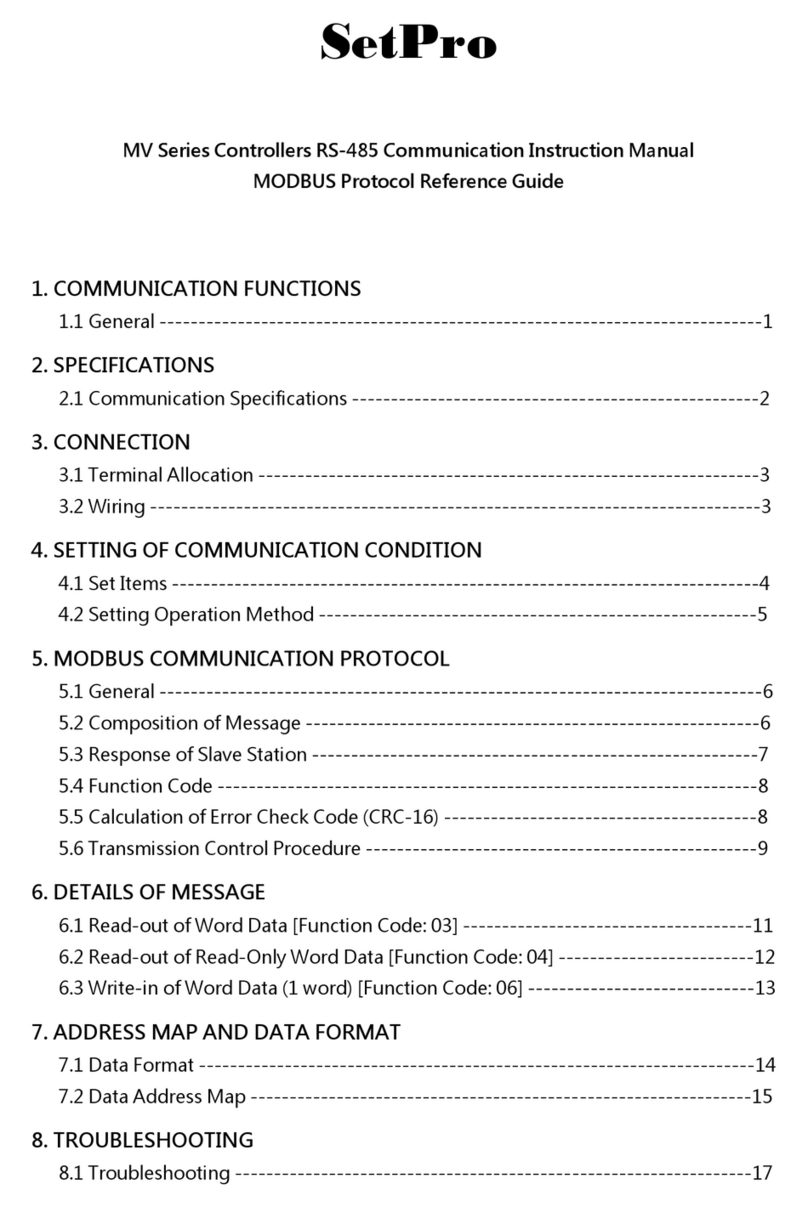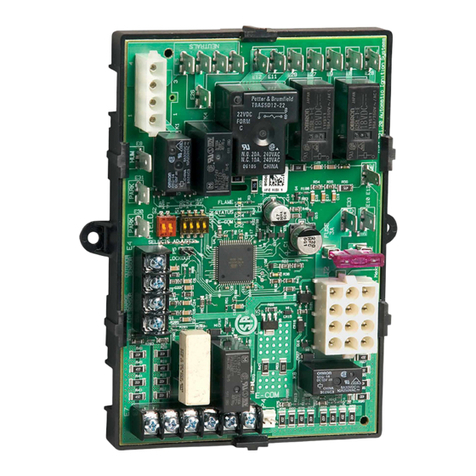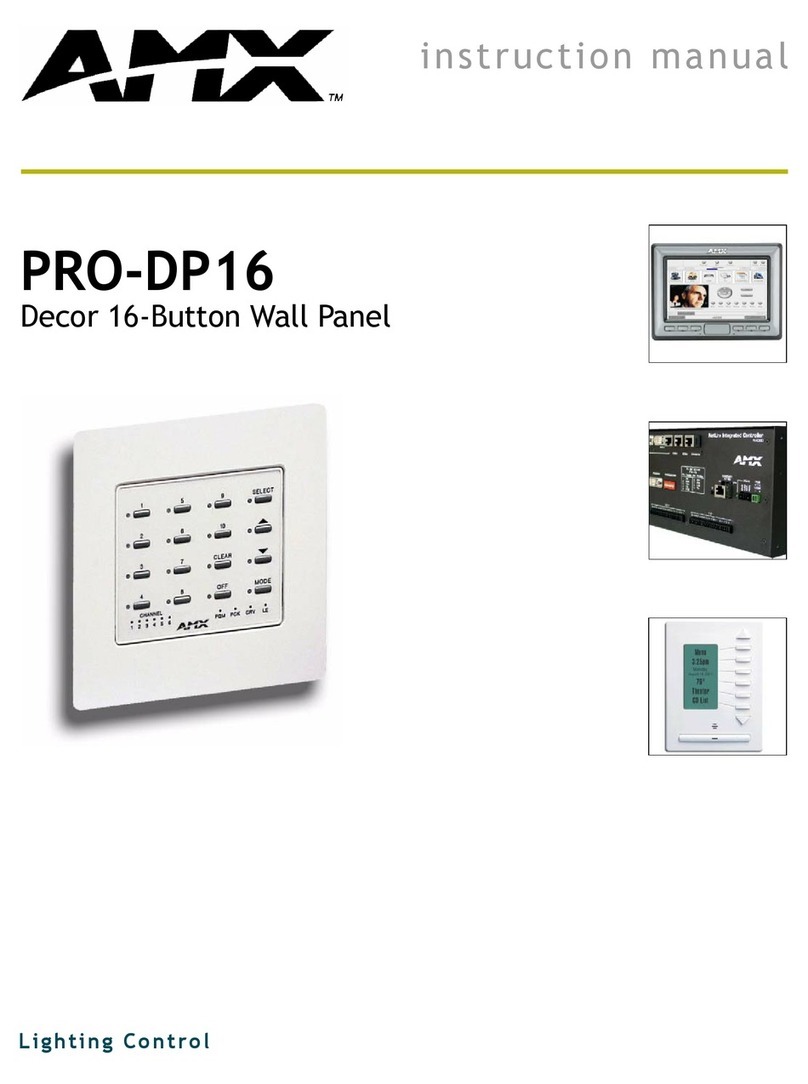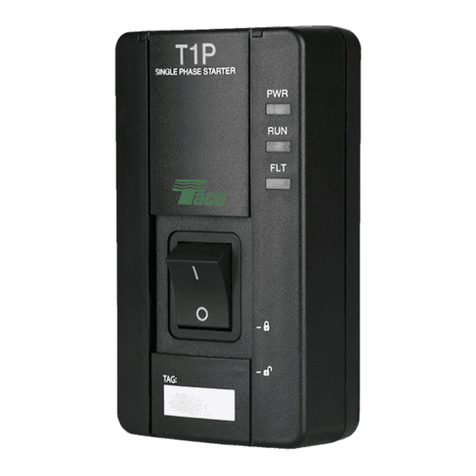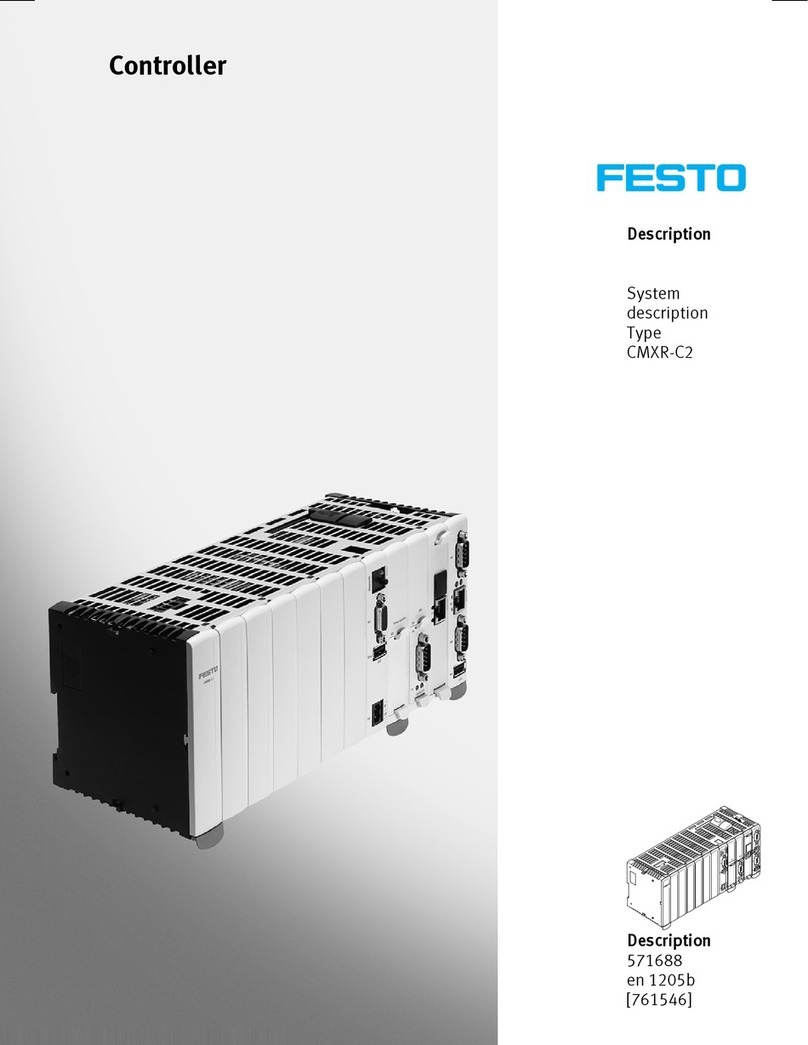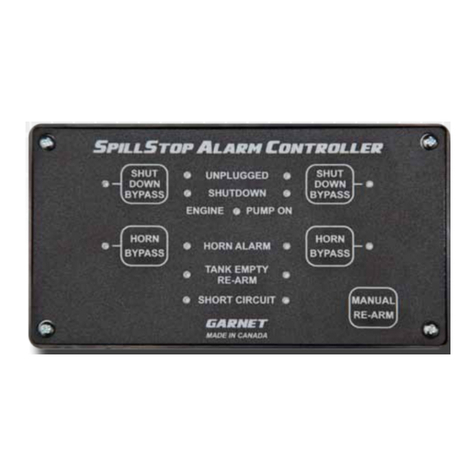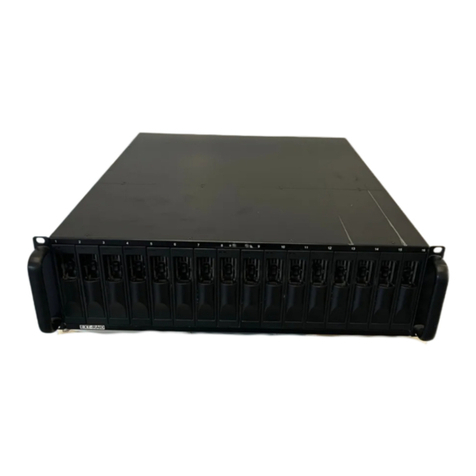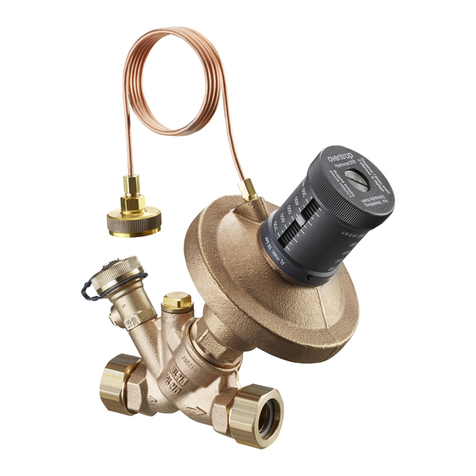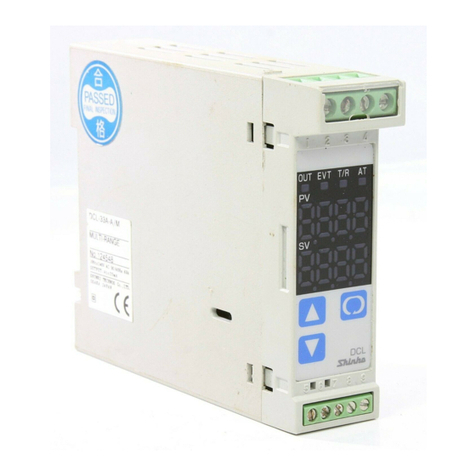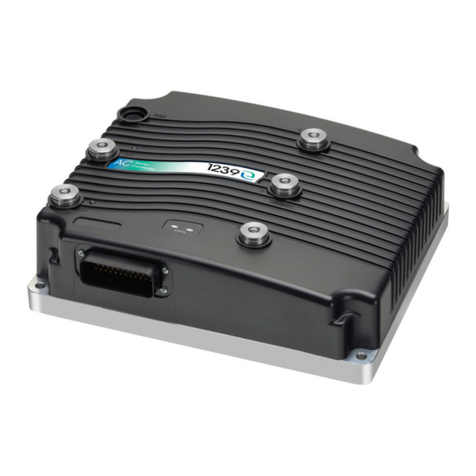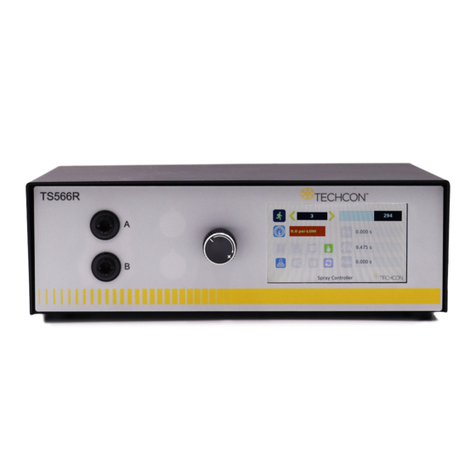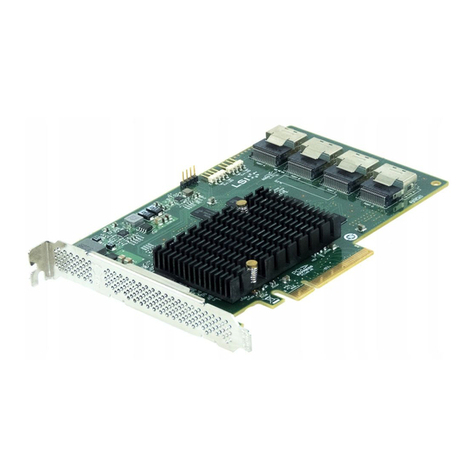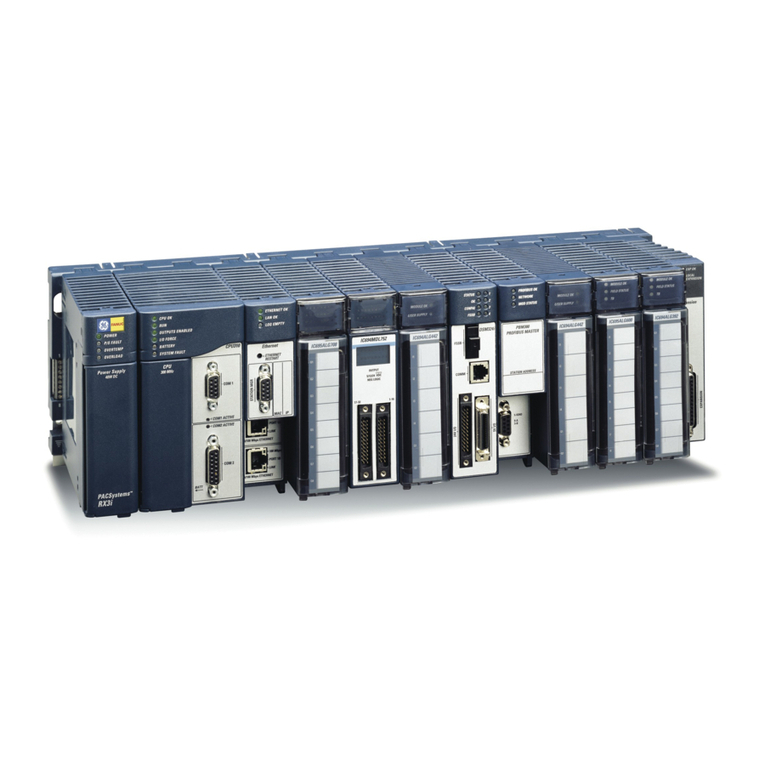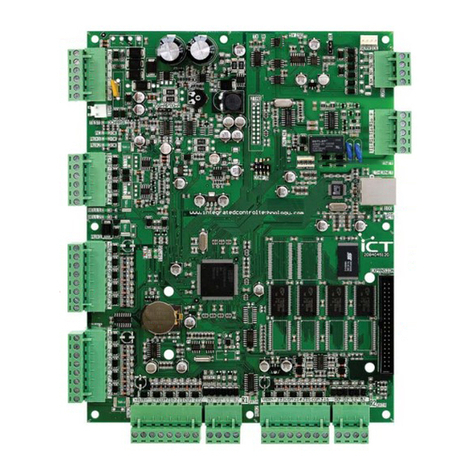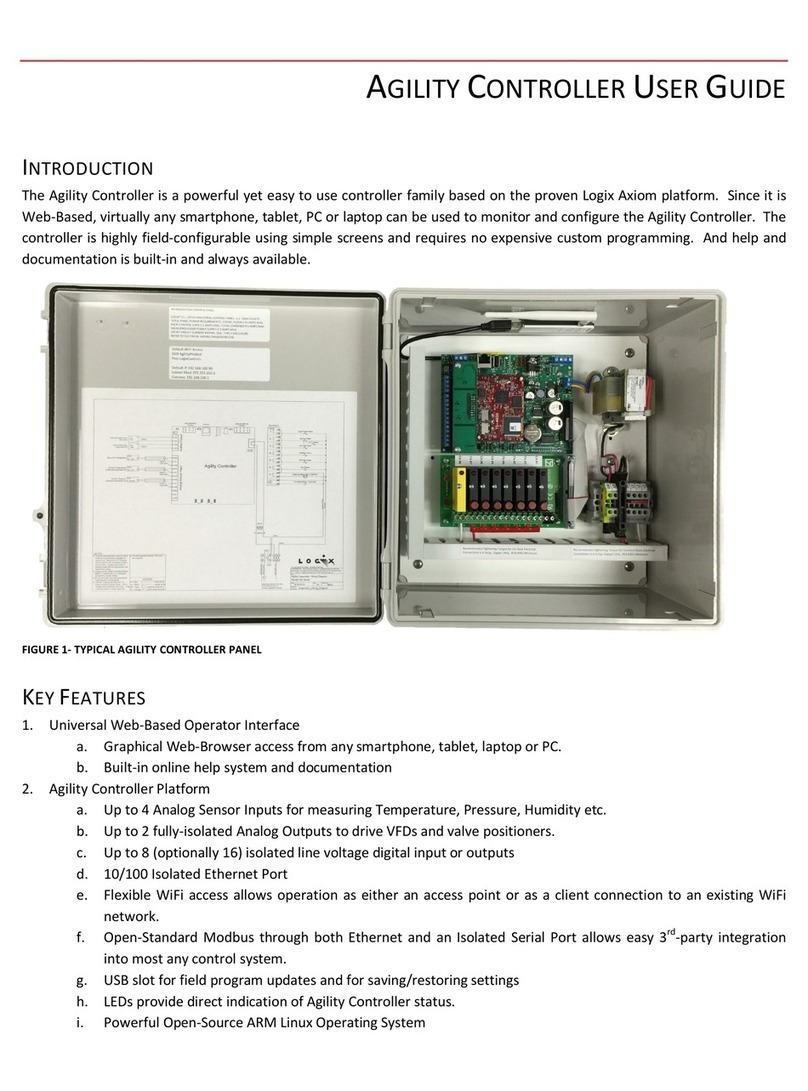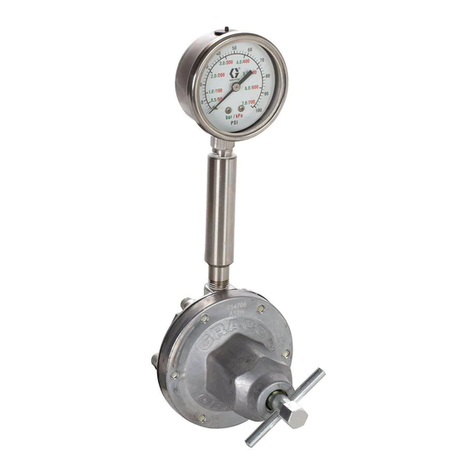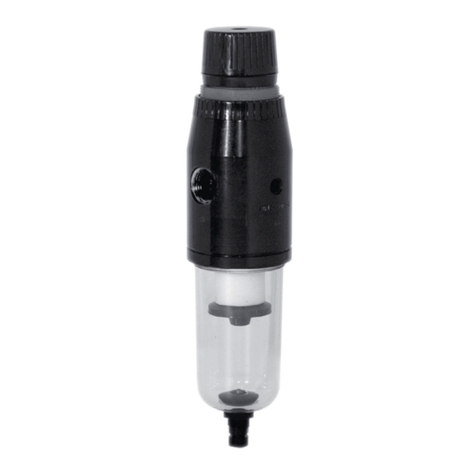Gigarise SE6000 Series User manual

SE6000 SERIES CONTROLLERS (VERSION4.0)
RS-485 COMMUNICATION INSTRUCTION MANUAL
MODBUS Protocol Reference Guide
1. COMMUNICATION FUNCTIONS
1.1 General -----------------------------------------------------------------------------------------1
2. SPECIFICATIONS
2.1 Communication Specifications --------------------------------------------------------1
3. CONNECTION
3.1 Terminal Allocation ------------------------------------------------------------------------1
3.2 Wiring ------------------------------------------------------------------------------------------2
4. SETTING OF COMMUNICATION CONDITION
4.1 Set Items --------------------------------------------------------------------------------------2
4.2 Setting Operation Method ---------------------------------------------------------------2
5. MODBUS COMMUNICATION PROTOCOL
5.1 General -----------------------------------------------------------------------------------------3
5.2 Composition of Message ---------------------------------------------------------------3
5.3 Response of Slave Station --------------------------------------------------------------4
5.4 Function Code -------------------------------------------------------------------------------4
5.5 Calculation of Error Check Code (CRC-16) ----------------------------------------4
5.6 Transmission Control Procedure -----------------------------------------------------5
6. DETAILS OF MESSAGE
6.1 Read-out of Word Data [Function Code: 03] ---------------------------------------6
6.2 Read-out of Read-Only Word Data [Function Code: 04] ------------------------6
6.3 Write-in of Word Data (1 word) [Function Code: 06] ----------------------------7
7. ADDRESS MAP AND DATA FORMAT
7.1 Data Format ----------------------------------------------------------------------------------7
7.2 Data Address Map --------------------------------------------------------------------------8
8. TROUBLESHOOTING
8.1 Troubleshooting ----------------------------------------------------------------------------8

1
1. COMMUNICATION FUNCTIONS
1.1 General
SE series provides a communication function by RS-485 interface, by which it can transmit
and receive data to and from host computer, programmable controller, graphic display panel,
etc.
The communication system consists of master station and slave stations. Up to 255slave
station can be connected per master station.
In order that the master station and slave station can communicate, the format of the
transmit/receive data must coincide. For the SE series, the format of the communication
data is determined by the MODBUS protocol (RTU mode).
Please use an RS-232C→RS-485 converter in case of designating a personal computer or
other devices which have an RS-232C interface as a master station.
2. SPECIFICATIONS
2.1 Communication Specifications
Item S pecification
Electrical specification Based on EIA RS-485
Transmit system 2-wire, semi-duplicate
Synchronizing system Asynchronous mode
Connection format 1 : N
Number connection
unit
Up to 255 units
Transmission distance 500m max
Transmission speed 2400 / 4800 / 9600 / 19200 selectable
Start bit 1 bit
Data length bit 8 bits
Parity bit None
Data format
Stop bit 2 bits
Transmission code HEX value (MODBUS RTU mode)
Error detection CRC-16 bits
Isolation Functional isolation between transmission circuit
and others (with stand voltage: 500V AC).
A typical MODBUS protocol character is shown below:
1 2 3 4 5 6 7 8 9 10 11
Start bit Data bits Stop bits
One character is including 1 Start bit and 8 Data bits and 2 Stop bits.
3. CONNECTION
△ WARNING
For avoiding electric shock and malfunctions, don’t turn on the power supply
until all wiring has been completed.
3.1 Terminal Allocation
SE6000
Terminal number Signal name
1 +
2 -

2
3.2 Wiring
Use twisted pair cables with shield.
Recommended cable: UL2464, UL2448, etc.
The total extension length of the cable is up to 500m. A master station and up to 255 units of
the SE series can be connected per line.
Both ends of the cable should be connecting with terminate resistors 100 1/2W.
The shield wire of the cable should be grounded at one place on the master station unit side.
4. SETTING OF COMMUNICATION CONDITION
In order that the master station and SE series can correctly communicate,
following settings are required.
All communication condition settings of the master station are the same as those of SE
series.
All SE series connected on a line are set to address (ADDR), which are different from each
other.
4.1 Set Items
The parameters to be set are shown in the following table. Set them by operating the front
panel keys.
Parameter Item Value at
delivery
Setting range Remarks
BAUD T ransmission
speed
9600 2400/4800/9600/19200
--------- Data length 8 bits Fixed (can’t be changed)
--------- Stop bit 2 bit Fixed (can’t be changed)
--------- Parity setting None Fixed (can’t be changed)
Set the same
communication
condition to the
master station and all
slave station.
ADDR Address 1 1 to 255
Set a different value
to each station.
4.2 Setting Operation Method
The following example shows how to set the communication condition.
Example: Setting a transmission speed is 9600 bps and address at 12 on a station.
Key
operation Indication Description
Power ON 25/100 Power on running state (PV/SP indication)
SET
(5 seconds)
PB Press SET key simultaneously for approximately 5
seconds to get level parameter.
SET
(5 seconds)
TYPE Press SET key simultaneously for approximately 5
seconds to get level parameter.
SET Press SET key to go into level.
SET ADDR Press SET key repeatedly until ADDR is display.
△or ▽ADDR/12 Press △or ▽key to setting “ADDR=12”
SET BAUD Press SET key again to select next parameter “BAUD”
△or ▽BAUD/9.6K Press △or ▽key to setting “BAUD=9.6K”

3
SET BAUD Press SET key to save “BAUD”.
SET + ▽25/100 Press SET +▽one time to return the normal indication
(PV/SV indication).
5. MODBUS COMMUNICATION PROTOCOL
5.1 General
The communication system by the MODBUS protocol is that the communication is
always started from the master station and a slave station responds to the received
message.
Transmission procedures is as shown below.
1. The master station sends a command message to a slave station.
2. The slave station checks that the address in the received message matches with
the own address or not.
3. If matched, the slave station executes the command and sends back the
response message.
4. If mismatched, the slave station leaves the command message and wait for the
next command message.
5. The master station can individually communicate with any one of slave stations
connected on the same line upon setting the address in the command message.
5.2 Composition of Message
Command message and response message consist of 4 fields; Address, Function code,
Data and CRC check code. And these are sends in this order. The allowable character
transmitted for all fields are hexadecimal 0-9,A-F
RTU mode framing
START ADDRESS FUNCTION DATA CRC CHECK END
T1-T2-T3-T4 8 BITS 8 BITS N × 8 BITS 16 BITS T1-T2-T3-T4
In the following, each field is explained.
1. Start
In RTU mode, messages start with a silent interval of at least 3.5 character times. This is
most easily implemented as a multiple of character times at the baud rate that is being
used on the network (shown as T1-T2-T3-T4 in the figure above). The first field then
transmitted is the device address.
2. Address
Address is the number specifying a slave station. Valid slave device addresses
are in the range 0f 1-255 decimal. A master addresses a slave by placing the
slave address in the address field of the message. When the slave sends its
response, it places its own address in this address field of the response to let the
master know which slave is responding.
Address 0 is used for the broadcast address, which all slave stations recognize.
When the broadcast address (address 0) is applied on the command message,
no any response message will be sent from the slave stations.
3. Function
This is a code to designate the function executed at a slave station. When a message is
sent from a master to a slave device the function code field tells the slave what kind of
action to perform. When the slave responds to the master, it uses the function code field
to indicate either a normal response or that some kind of error occurred. For normal
response, the slave simply echoes the original function code. For an exception response,
the slave returns a code that is equivalent to the original function code with its
most-signification bit set to a logic 1.
4. Data

4
Data are the data required for executing function codes. The composition of data varies
with function codes. Refer to chapter 6 for details.
A data address is assigned to each data in the temperature controller. For reading/writing the data
by communication, designate the data address.
5. CRC check
This is the code to detect message errors (change in bit) in the signal transmission.
On the MODBUS protocol (RTU mode), CRC-16 (Cyclical Redundancy Check) is applied.
For CRC calculation method, refer to section 5.5.
6. End
Following the last transmitted character, a similar interval of at least 3.5 character times
marks the end of message. A new message can begin after this interval.
5.3 Response of Slave Station
1. Response for normal command
To a relevant message, the slave station creates and sends back a response
message, which corresponds to the command message. The composition of
message in this case is the same as in section 5.2. Content of the data field
depend on the function code. For details, refer to Chapter 6.
2. Response for abnormal command
If contents of a command message have an abnormality (for example,
non-actual function code is designated) other than transmission error, the slave
station does not execute that command but creates and sends back a response
message at error detection.
The composition of response message at error detection is shown on below, the
value used for function field is function code of command message plus 80H.
ADDRESS FUNCTION (Function code + 80H) ERROR CODE CRC CHECK
8 BITS 8 BITS 8 BITS 16 BITS
Error Code Contents Description
01 Illegal function The function code received is not an allowabl
e
action for the slave.
02 Illegal data address The data address received is not an allowabl
e
address for the slave.
03 Illegal data value A value contained in the data field is not
an allowable value for the slave.
5.4 Function Code
The listing below shows the function codes supported by SE series controllers.
Function code
Code Function Object
03 Read-out Holding Register
04 Read-out Input Register
06 Write-in Holding Register
5.5 Calculation of Error Check Code (CRC-16)
CRC-16 is the 2-bytes (16-bits) error check code. From the top of the message (address) to
the end of the data field are calculated.
The slave station calculates the CRC of the received message, and does not respond if the
calculated CRC is different from the contents of the received CRC code.
A procedure for generating a CRC is:
1. Load a 16-bits register with FFFF hex (all 1’s). Call this the CRC register.
2. Exclusive OR the first 8-bit byte of the message with the low-order byte of the 16-bit
CRC registers, putting the result in the CRC register.

5
3. If the LSB is 0: Shift the CRC register one bit to the right (toward the LSB),
Zero-filling the MSB.
If the LSB is 1: Shift the CRC register one bit to the right (toward the LSB),
Zero-filling the MSB. Exclusive OR the CRC registers with the polynomial value
A001 hex.
4. Repeat step 3 until 8 shifts have been performed. When this is done, a
complete 8-bit byte will have been processed.
5. Repeat step 2 through 5 for the next 8-bit byte of the message. Continue doing
this until all bytes have been processed.
6. The final content of the CRC register is the CRC value. The CRC field is
appended to the message as the last field in the message. When this is done,
the low-order byte of the field is appended first, followed by the high-order byte.
The CRC high-order byte is the last byte to be sent in the message.
5.6 Transmission Control Procedure
1. Transmission procedure of master station
The master station must proceed to a communication upon conforming to the following
items.
1-1. Before sending a command message, provide 44 bits time or more vacant
status.
1-2. For sending, the interval between bytes of a command message is below 22
bits time.
1-3. Within 22 bits time after sending a command message, the receiving status is
posted.
1-4. Provide 44 bits time or more vacant status between the end of response
message reception and beginning for next command message sending (same
as in 1-1).
1-5. For ensuring the safety, make a confirmation of the response message and make
an arrangement so as to provide 3 or more retries in case of no response, error
occurrence, etc.
Note: The above definition is for most unfavorable value. For ensuring the safety, it’s
recommended the program of the master to work with safety factors of 2 to 3.
Concretely, it is advised to arrange the program for 9600 bps with 10ms or more for
vacant status (1-1), and within 1ms for byte interval (1-2) and changeover from
sending to receiving (1-3).
2. Description
(1). Detection of the message frame
Since the communication system uses the 2-write RS-485 interface, there may
be 2 statuses on a line below.
(a) Vacant status (no data on line)
(b) Communication status (data is existing)
Instruments connected on the line are initially at a receiving status and
monitoring the line. When 22 bits time or more vacant status has appeared on
the line, the end of preceding frame is assumed and, within following 22 bits time,
a receiving status is posted. When data appears on the line, instruments receive
it while 22 bits time or more vacant status is detected again, and the end of that
frame is assumed. Data, which appeared on the line from the first 44ms time or
more vacant status to the next 44 bits time or more vacant status is fetched as
one frame.
1-1. 44 bits time or more vacant status precedes the command message
sending.
1-2. Interval between bytes of 1 command message is smaller than 22 bits
time.
(2). Response of this instrument (SE series)
After a frame detection (22 bits time or more vacant status), this instrument

6
carries out-processing with that frame as a command message. If the command
message is destined to the own station, a response message is returned. Its
processing time is 1 to 10ms (depends on contents of command message). After
sending a command message, therefore, the master station must observe the
following.
1-3. Receiving status is posted within 22 bits time after sending a command
message.
6. DETAILS OF MESSAGE
6.1 Read-out of Word Data [Function Code: 03]
Read the contents of holding registers (0000~ 007D) in the slave.
Broadcast is not possible.
1. Message composition
Command message composition
Address Function Starting Address Word Number* CRC-16
01~FF 03 0xxx 0001~007E Low-order byte High-order byte
1 byte 1 byte 2 byte 2 bytes 2 bytes
* Maximum word number = 7E
Response message composition
Address Function Byte Number * Word Data CRC-16
01 ~ FF 03 02~FC Low-order byte High-order byte
1 byte 1 byte 1 bytes N bytes 2 bytes
* Byte number = Word number × 2
2. Message transmission (example)
The following show an example of reading the Setpoint Value (1000) from address No.1
controller.
Command message composition
Address Function Starting Address Word Number CRC-16
01 03 0000 0001 840A
Response message composition
Address Function Byte Number Word Data CRC-16
01 03 02 03E8 B8FA
6.2 Read-out of Read-Only Word Data [Function Code: 04]
Read the contents of input registers (1000~1002) in the slave.
Broadcast is not possible.
1. Message composition
Command message composition
Address Function Starting Address Word Number CRC-16
01~FF 04 1xxx 0001~007E Low-order byte High-order byte
1 byte 1 byte 2 bytes 2 bytes 2 bytes
Response message composition
Address Function Byte Number Word Data CRC-16
01 ~ FF 04 02~FC Low-order byte High-order byte
1 byte 1 byte 1 byte N bytes 2 bytes
2. Message transmission (example)
The following show an example of reading the Process Value (27) from address No.1 controller.
Command message composition
Address Function Starting Address Word Number CRC-16
01 04 1000 0001 350A
Response message composition

7
Address Function Byte Number Word Data CRC-16
01 04 02 001B F93B
6.3 Write-in of Word Data (1 word) [Function Code: 06]
1. Message composition
Command message composition
Response message composition
2. Message transmission (example)
The following show an example of writing the Setpoint Value to address No.1 controller.
Command message composition
Address Function Starting Address Word Data CRC-16
01 06 0000 01F4 89DD
Response message composition
Address Function Starting Address Word Data CRC-16
01 06 0000 01F4 89DD
7. ADDRESS MAP AND DATA FORMAT
7.1 Data Format
1. Transmission data format
The MODBUS protocol used in this instrument (SE series) is RTU (Remote Terminal Unit)
mode.
Transmitted data is “numeric value” and not “ASCII code”.
2. Internal calculation value and engineering unit
There are 3 different kinds of set value in the SE series controllers.
1. Normal value:
The data value is transfer into Hexadecimal regardless of decimal. For example:
1000 ℃will be transfered to 03E8(hex), However, such as output percentage and
Pb (proportional band), 100.0 % will be transfered to 03E8(hex).
2. Index code:
Some parameters value are set by index code. For example, to change the unit to ℃
via communication. The data value would be 0017(hex).
Code English Code English Code English Code English
00 J 0F ENG 1E 9.6K 2D 1101
01 K 10 0000 1F 19.2K 2E 1110
02 T 11 000.0 20 0000 2F 1111
03 E 12 00.00 21 0001 30 HI
04 B 13 0.000 22 0010 31 LO
05 R 14 REV 23 0011 32 DIF.H
06 S 15 DIR 24 0100 33 DIF.L
07 N 16 NONE 25 0101 34 BD.HI
08 C 17 STDY 26 0110 35 BD.LO
09 D-PT 18 LATH 27 0111 36 T.ON
0A J-PT 19 ST.LA 28 1000 37 T.OFF
Address Function Starting Address Word Data CRC-16
1 ~ FF 06 0xxx 0xxx Low-order byte High-order byte
1 byte 1 byte 2 bytes 2 bytes 2 bytes
Address Function Starting Address Word Data CRC-16
1 ~ FF 06 0xxx 0xxx Low-order byte High-order byte
1 byte 1 byte 2 bytes 2 bytes 2 bytes

8
0B LINE 1A HH.MM 29 1001 38 NONE
0C ℃1B MM.SS 2A 1010 39 LO
0D ℉1C 2.4K 2B 1011 3A HI
0E ENG 1D 4.8K 2C 1100 3B HI.LO
7.2 Data Address Map
Word data (read-out/write-in) : Function code [03,,05,06]
Data Address Parameter Range Unit
0000 SP HiLt~LoLt ℃/℉
0001 SPOF -1000~1000 ℃/℉
0002 PVOF -1000~1000 ℃/℉
0003 A1SP -1000~1000 ℃/℉
0004 A2SP -1000~1000 ℃/℉
0005 A3SP -1000~1000 ℃/℉
0006 PB 0.0~300.0 %
0007 TD 900 Sec
0008 CT 0~100 Sec
0009 HYST 0~2000 ℃/℉
000A A1HY 0~2000 ℃/℉
000B A2HY 0~2000 ℃/℉
000C A3HY 0~2000 ℃/℉
000D LOCK 0000~1111
000E TYPE J/K/B/R/S/T/E/N/C/DPT/JPT/LINE (English code)
000F UNIT ℃/ ℉/ ENG (English code)
0010 DP 0000/000.0/00.00/0.000 (English code)
0011 ACT REV / DIR(English code)
0012 LOLT -1999~9999 ℃/℉
0013 HILT -1999~9999 ℃/℉
0014 FILT 0.0~-100.0
0015 A1FU None/Hi/Lo/dif.H/dif.L/bd.Hi/bd.Lo/T.SNL (English code)
0016 A1MD None/Stdy/Lath/St.La/T.End (English code)
0017 A2FU None/Hi/Lo/dif.H/dif.L/bd.Hi/bd.Lo/T.SNL (English code)
0018 A2MD None/Stdy/Lath/St.La/T.End (English code)
0019 A3FU None/Hi/Lo/dif.H/dif.L/bd.Hi/bd.Lo/T.SNL (English code)
001A A3MD None/Stdy/Lath/St.La/T.End (English code)
001B ADDR 0~255 0
001C BAND
001D CH01 0~2000
001E CL01 0~2000
001F RTSH 0~3000
0020 RTSL 0~3000
0021 MR 0.0~100.0 %
Word data (read-out only) : Function code [04]
Data Address Parameter Contents Unit
1000 PV Process value
8. TROUBLESHOOTING

9
8.1 Troubleshooting
If the communication is unavailable, check the following items.
□Whether all devices related to communication are turned on.
□Whether connections are correct.
□Whether the number of connected instruments and connection distance are as specified.
□Whether communication conditions coincide between the master station (host
computer) and slave station (SE6000).
□Transmission speed : □2400 bps □4800 bps □9600 bps □19200 bps
□Address :01 ~ FF (master and slave station must be match)
□Whether send/receive signal timing conforms to Section 5.4 in the manual.
□Whether more than one instrument connected on the same transmission line share the
same address.
Table of contents
Other Gigarise Controllers manuals
